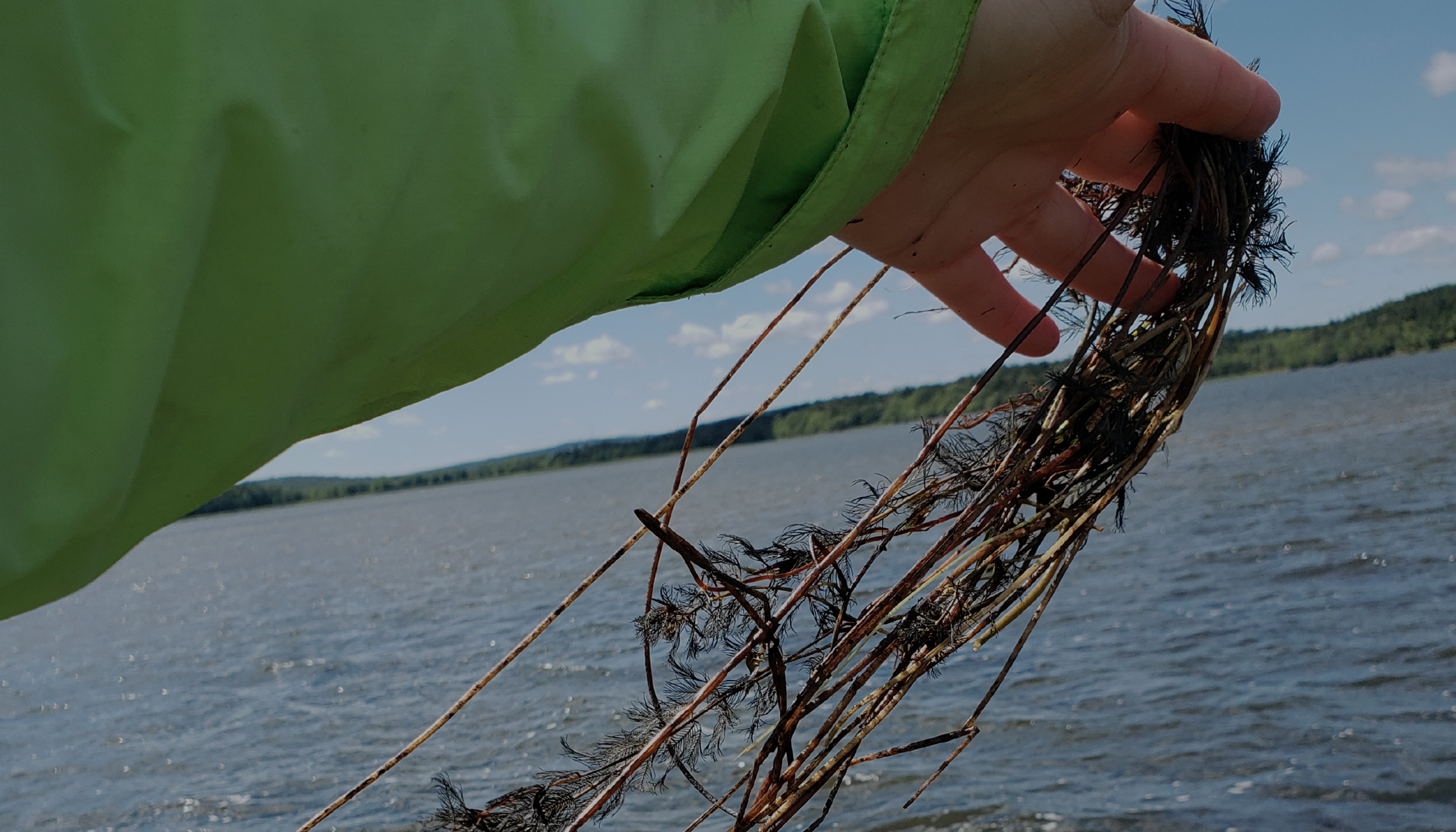
Invasive Species | Aquatic Plants
Eurasian watermilfoil
Eurasian watermilfoil
(Myriophyllum spicatum)
French common name: Myriophille en épi
Eurasian watermilfoil has severe impacts on aquatic ecosystems when it is introduced to a new area, including rapidly establishing and forming dense mats of floating vegetation that shade out native aquatic plants and reduce oxygen in the water, impacting fish and other species. Large mats of Eurasian watermilfoil can also limit recreation, boating, and fishing opportunities in local waterbodies.
Characteristics
Life Cycle: Establishes early in the growing season and persists throughout summer into late fall.
Size/Structure: Stems grow up in vertical columns from the bottom. Multiple stems entangle to form dense patches and floating mats on the surface.
Leaves: Leaves are whorled with 4-5 leaves arranged around the stem like a windmill. Each leaf is made up of 12~ pairs of thread-like leaflets.
Stem: Red to light yellow in color, with leaves spaced out along the stems more than 1cm apart. Can have long sections of stem without any leaves as they can auto-fragment.
Flowers: Small flowers are produced in late July into early August at the end of the plant, made up of small orange/red flowers (4-6mm).
Habitat: Freshwater lakes, rivers and ponds. Prefers to root in shallow water (1-3 m) but can root in deeper slow-moving water (>10m).
Rob Routledge, Sault College, Bugwood.org
Key ID Features
Ryan Hodnett
Dense clusters of vegetation
Kristian Peters
Small flowerheads above the surface
Agnieszka Kwiecień, license: CC-BY 3.0
Whorled leaf arrangement
Common Look-a-Likes
Canada Waterweed (Elodea Canadensis)
Absence of feathery leaves
Slender Stems
Small Size compared to Eurasian Water Milfoil
Christian Fischer
Unknown
Hydrilla (Hydrilla verticillata)
Invasive
Small serrated leaves
Absence of feathery leaves
Whorled Leaf arrangement
Patrick Hacker
Hornwort (Ceratophyllum demersum)
White to green stem
Christmas tree shape
7-10 leaflet pairs per leaf








